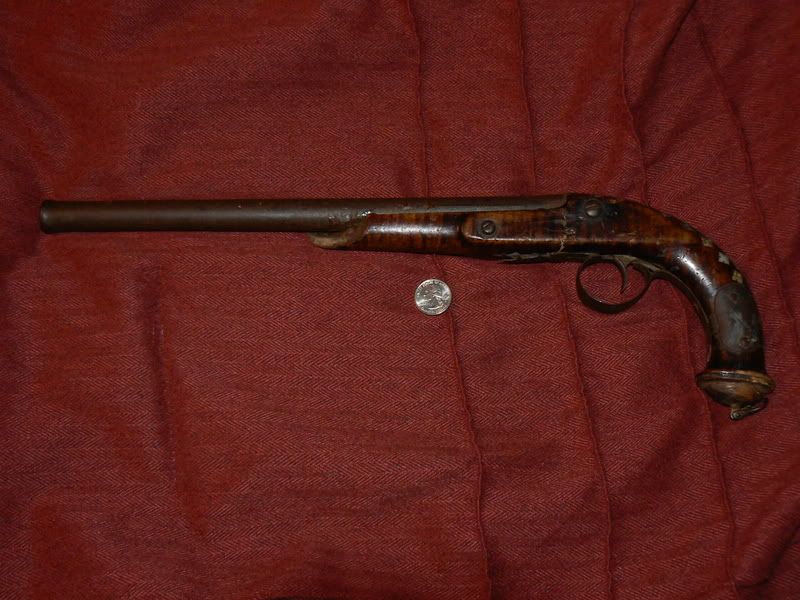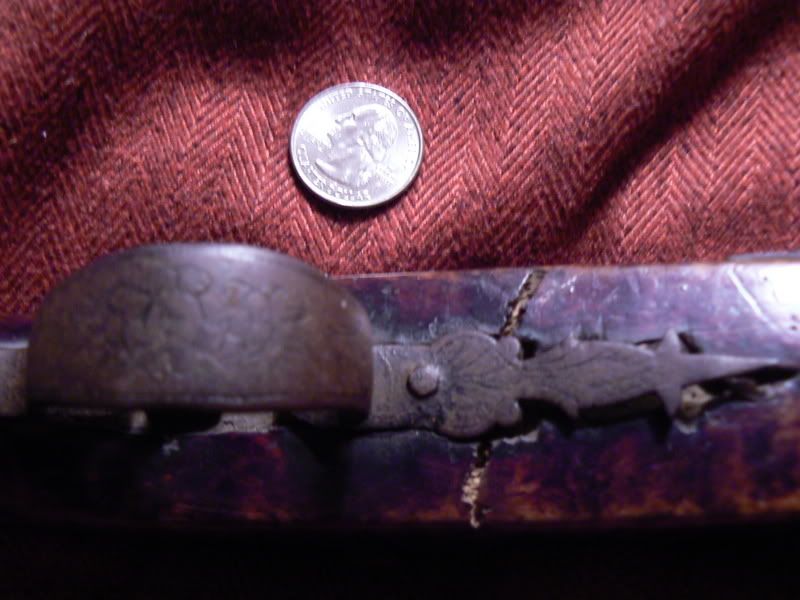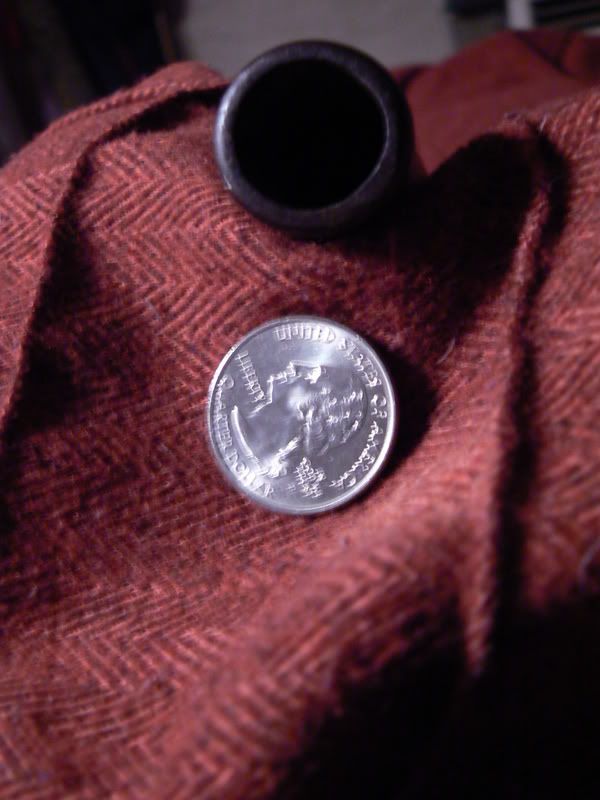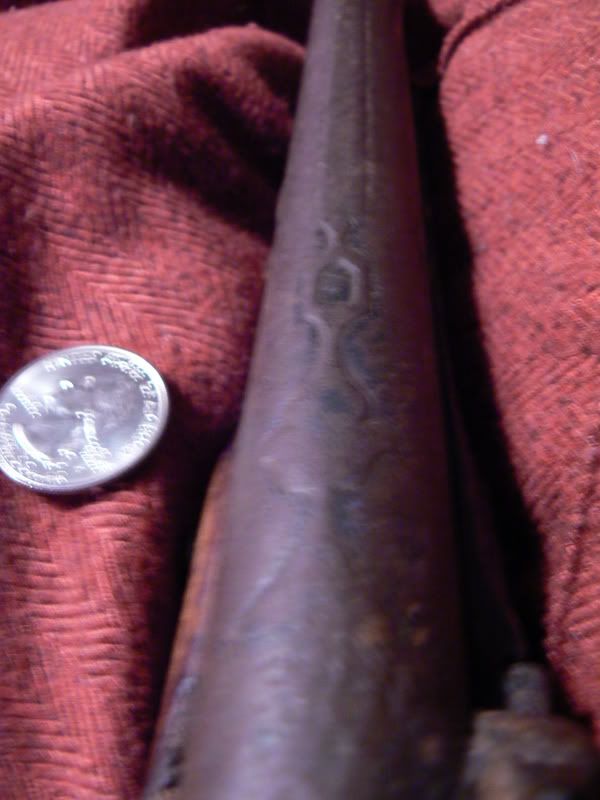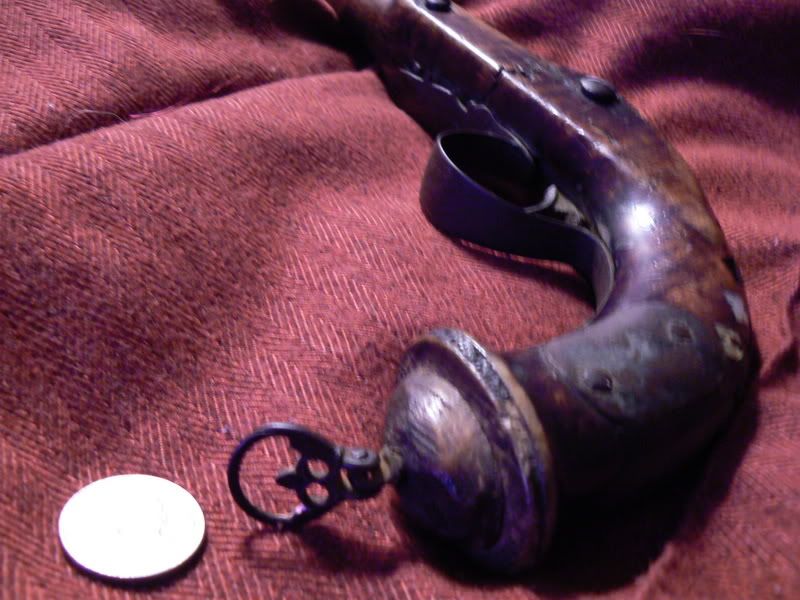birdsbeaks
Pilgrim
- Joined
- Nov 30, 2007
- Messages
- 4
- Reaction score
- 0
Hello everyone!,
This pistol was acquired by my sister at a garage sale for literally "a couple dollars". It served as a prop for her pirate costume on Halloween, and was about to be discarded. When I noticed it's authentic mother of pearl inlays, and what appears to be quality wood on the "stock???", I salvaged it from the trash for a closer look. This pistol is in terrible condition - broken stock, broken and pieces missing firing mechanism, missing/cracked inlays. It has engravings of a crown on it's right side, a floral motif on the bottom of the trigger guard, and some minor work on top of barrel. I'm more interested in the historical origins and significance of this piece, but any ballpark assessment of worth would also be appreciated, along with any reccomendation on what could be/should be done as far as possible restoration or preservation. On another site's forum, their was some speculation that it could be british, french, belgian, or other european country, I decided my best bet would be to come ask the muzzleloading pros. Any information would be very much appreciated. Pics or links to pics following:
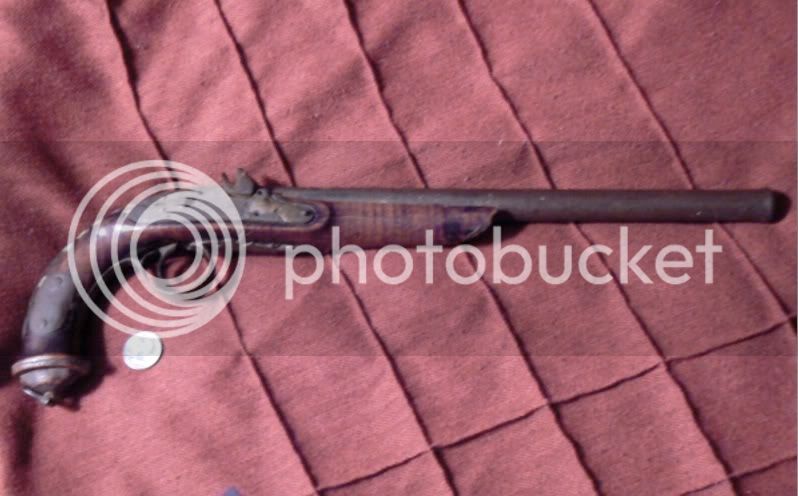
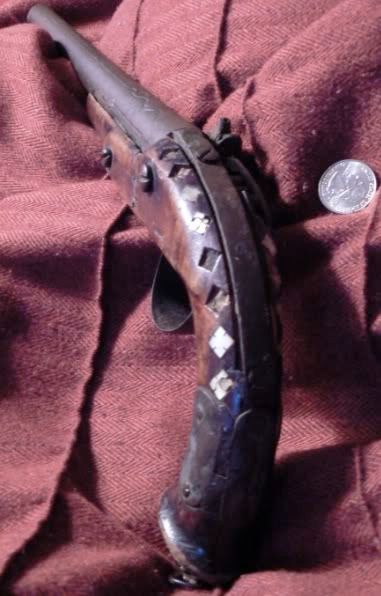
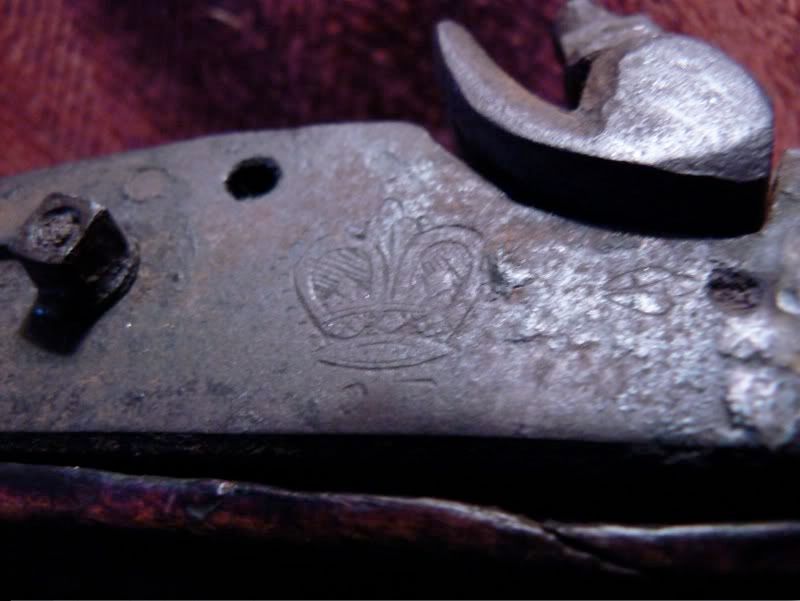
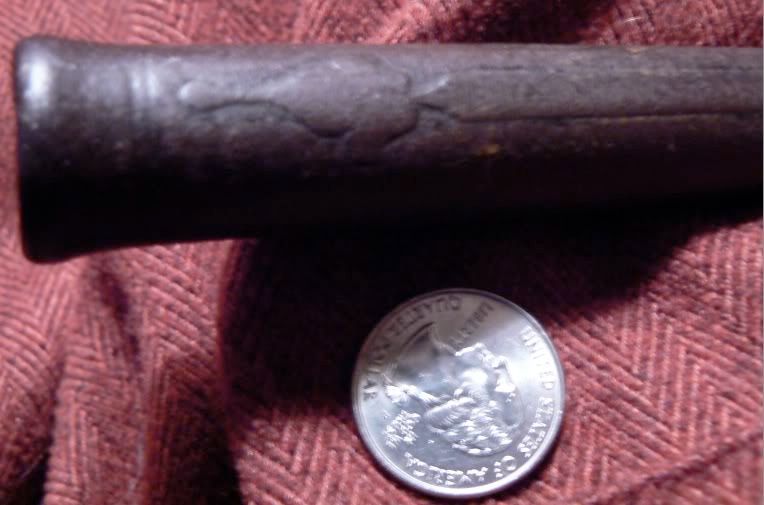
This pistol was acquired by my sister at a garage sale for literally "a couple dollars". It served as a prop for her pirate costume on Halloween, and was about to be discarded. When I noticed it's authentic mother of pearl inlays, and what appears to be quality wood on the "stock???", I salvaged it from the trash for a closer look. This pistol is in terrible condition - broken stock, broken and pieces missing firing mechanism, missing/cracked inlays. It has engravings of a crown on it's right side, a floral motif on the bottom of the trigger guard, and some minor work on top of barrel. I'm more interested in the historical origins and significance of this piece, but any ballpark assessment of worth would also be appreciated, along with any reccomendation on what could be/should be done as far as possible restoration or preservation. On another site's forum, their was some speculation that it could be british, french, belgian, or other european country, I decided my best bet would be to come ask the muzzleloading pros. Any information would be very much appreciated. Pics or links to pics following:








